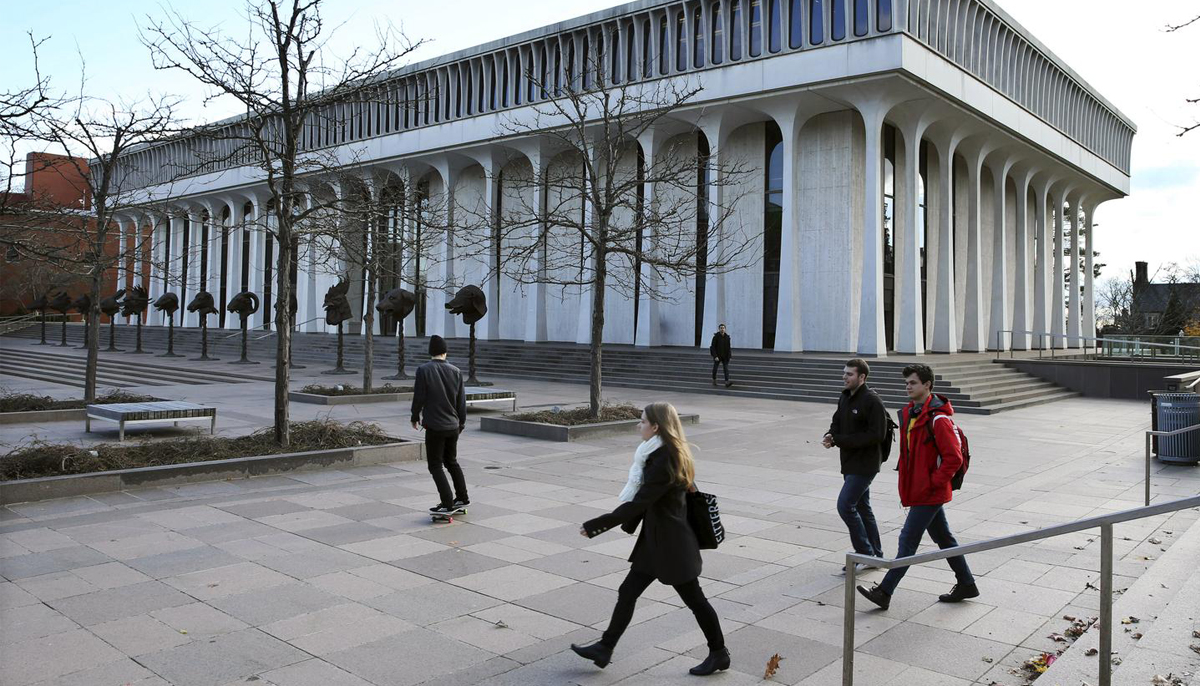
As the rising costs of tuition and fees outpace increases in financial aid and student debt skyrockets, there has never been a more critical time to bring innovation to our higher education system. We are here to share the one thing student loan lenders don’t want you to know: There is an entire year’s worth of top-flight college education courses leading to real college credits, available for free, online right now. If you’re a governor, state education leader or a parent looking at paying the high cost of college, this message is addressed to you.
Over the past decade, the cost of college tuition has increased by a crushing 71 percent, putting higher education out of reach for many high school seniors, adult learners and others. In 2017, nearly half of all students who dropped out of college say they did so because of cost. Politicians nationwide are scrambling to find ways to do something about this crisis, which has led to more than $1.3 trillion in student loans. A college degree is still the surest path to a good job for many people. But higher education — at about 9.9% of state spending — is already the third largest budget item for state and local taxes, after K–12 and Medicaid. And increasingly, the student’s tuition cost — with an average $38,600 four-year price tag for in-state residents at public universities — is out of reach.
Fortunately, there is a new, simple, and exceptionally inexpensive program that governors and states can adopt right now to lower the cost of tuition by up to 25 percent and create an immediate “on ramp” to college for students.
Modern States Education Alliance, a philanthropic organization dedicated to making college more affordable and more accessible, has pioneered “Freshman Year for Free,” through its website ModernStates.org. It provides more than 30 top quality online college courses to anyone for free, and can lead to a full year of real academic credit at more than 2,900 traditional colleges and universities, from Purdue to the University of Wisconsin to Morehouse.
The courses are taught by top university professors, and include free online textbooks as well, with one course for every subject tested by the College Board’s well established College Level Examination Program (CLEP). The CLEP exams have been around for more than 50 years, and are particularly useful because they can be taken by people of any age, any day of the year, at 1,800 different assessment centers worldwide.
Students can now go to ModernStates.org as easily as they visit Netflix. They then simply download a course, pass a CLEP exam and become eligible for credit when they enter any of the thousands of traditional four-year universities that accept a passing score on the CLEP exam for credit. Modern States spent more than three years developing the website and courses in partnership with professors from Columbia University, Purdue, Johns Hopkins, SUNY (State University of New York schools) and other leading universities. It is also itself paying the College Board’s $85 per course exam fee for the first 10,000 test takers.
That’s where the opportunity for governors comes in. For $85 per CLEP exam, far less than the cost of tuition for college credits, governors across the country can enable students to take a CLEP test for free and earn college credit. The fee for the exam is small compared to the $1,782 cost of a typical course at a public university, and can provide a path to higher education for thousands of students who face the choice between not going to college or taking on massive debt.
For perspective, helping 100,000 state residents pass 100,000 course exams would only cost a state $8.5 million — a fraction of a state’s education budget — and probably save the state far more in taxpayer subsidized alternatives or safety net programs. States could also encourage its use in high schools by including passage of Advanced Placement or CLEP exams in their high school accountability systems and providing financial incentives to school districts when students earn college credit through these and other college credit options.
Modern States has gained more than 60,000 registered users since it launched in August 2017, and its student passing rate on CLEP exams has well exceeded the 70 percent national average. High schoolers, working parents, military personnel, and Dreamers, to name a few, are all benefitting from this innovation.
Covering the expense of an $85 test fee is an inexpensive way for state policymakers to do something about the high cost of college. This is a rare opportunity for states to make a real difference and earn a real return on investment. This month, more than two million students across the nation will find out where, and if, they were accepted to attend college. But, today, more than half of first year college students are concerned they won’t be able to afford college without substantial aid or loans. Let’s not let another year go by before we provide them an easy way to save 25 percent on their higher education.
— Jeb Bush and Steve Klinsky
Jeb Bush is the Chairman of the Foundation for Excellence in Education and 43rd governor of Florida. Steve Klinsky is the Founder and CEO of Modern States. They are, respectively, the past and current chairs of Harvard’s Program for Education Policy and Governance.
This post originally appeared on RealClear Policy.


